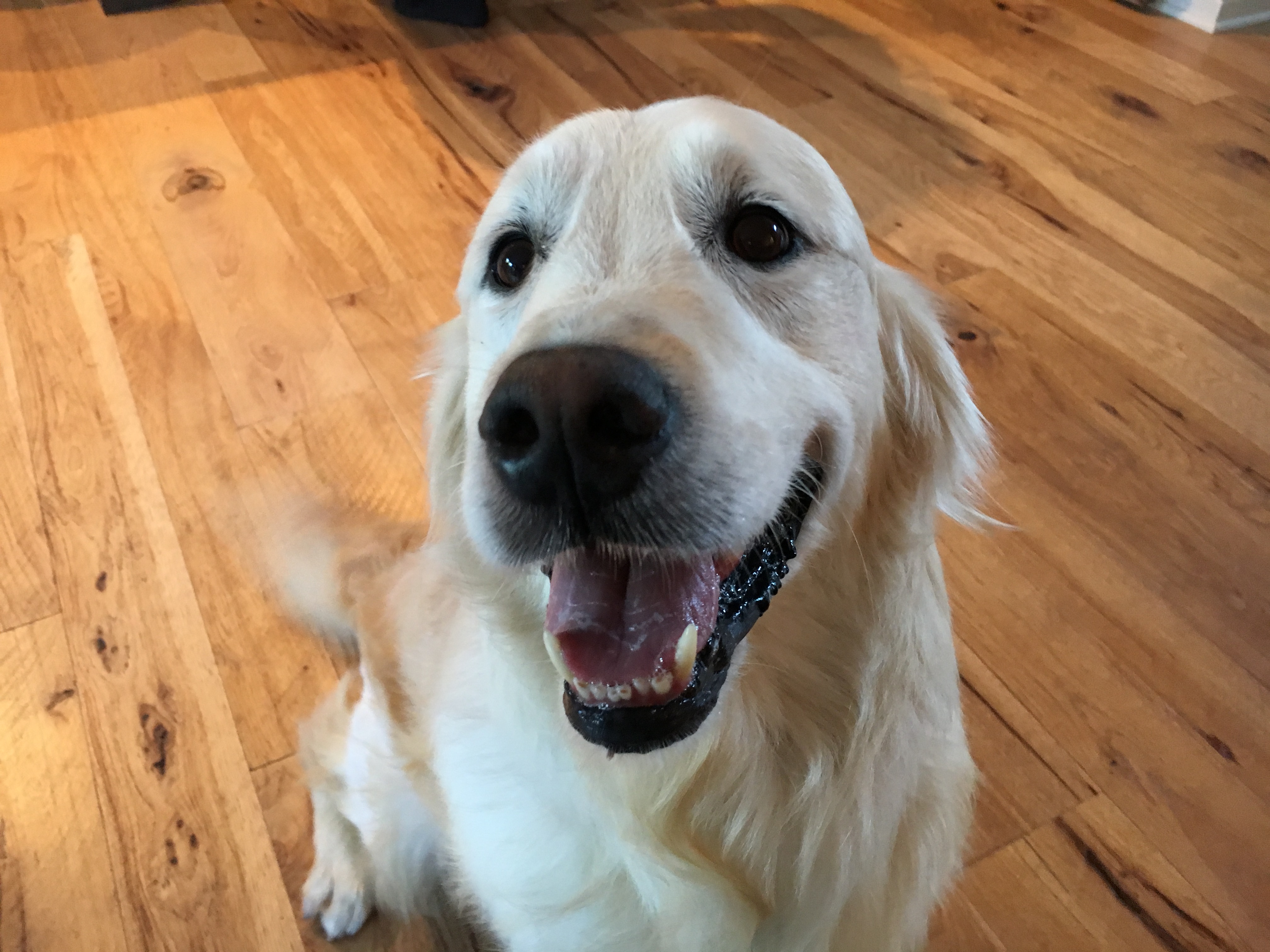Teaching a Formerly Abused English Cream Retriever to Stay to Build His Confidence
By: David Codr
Published Date: October 13, 2017
In this Omaha dog training session we helped an formerly abused English Cream Retriever named Cypress learn to stay to boost his self esteem and give him skills to help stop his Separation Anxiety.
It’s always sad when you see a dog who comes from an abusive situation. These abused dogs usually have a tell or multiple tells. In Cypress’s case, he leaned over forward with his midsection close to the floor in a pseudo crouch. This hunched over / cowering position is one dogs use to communicate they are sorry or trying to appease someone who is upset with them. Although I didn’t see it during the session, Id be willing to bet that its this posture that Cypress submissively urinates from.
It was difficult to see the dog acting this way as he really has a beautiful personality. As I referenced in one of the videos, his gentile nature would make him a great candidate to be a service or therapy dog. I sincerely enjoyed spending time with this wonderfully gentle dog.
When I sat down with the family’s mother, I learned that Cypress’ submissive behavior and submissive urination was most prevalent when the family’s father was present. This leads me to believe it was a male who abused Cypress sometime in his past. It will be good for the father to turn sideways and take a knee when he sees the dog adopt this cowering posture.
Cypress really lucked out with his new family, although it started off a little rough. The family had hired a local dog “trainer” who practices dominance theory. This is an old out of date practice abandoned by reputable dog trainers as its a fear and forced based approach that comes with a lot of unintended consequences.
When you have a dog who is already suffering from low self esteem and confidence, punishing it with this idiot-trainer’s approach, something he calls “snap praise” (putting the dog on a pinch collar and violently jerking it up 15 times in a row while saying “good dog”) is nothing short of animal abuse as far as I’m concerned.
If you hire a dog trainer who wants to use a pinch or prong collar, choke chain, shock collar, uses alpha rolls, teaches you to “take a dog’s breath away” or is overly physical outside of delivering affection, I STRONGLY suggest you find another trainer.
After working with over 2,500 dogs, I have never needed to use pain causing tools to help a dog. I find its a sign of someone without the prerequisite tools who use this approach. So if you find a dog trainer advising you to use this approach, ask yourself; do you want your dog to behave because it fears you, or because you taught it how to behave via positive dog training methods. Be your dog’s voice or advocate. Punishment is no way to train or rehabilitate a dog.
Now that Cypress had found humans who were kind and loving, he has become a bit of what we call a velcro dog; staying within sight of the family’s mother and displaying signs of separation anxiety when she is not around.
To help Cypress develop more confidence, his family will need to help him practice being alone. As a dog behaviorist, I find a great way to help a velcro dog stop being anxious about being alone is to train a dog to stay.
Once Cypress has learned the stay command, his guardian can put him into short stays that progressively get longer and longer. The dog knows the human is still in the house and because the process is progressive, he learns that its not the end of the world when the guardian is not within eye sight as they always come back.
After demonstrating the stay command, I had the guardian practice the stay with Cypress herself so I could offer some dog behavior tips when it comes to teaching a dog to stay.
It will be important to practice the stay a few times a day in short mini dog training sessions. Once the guardians have helped Cypress learn to stay for duration (up to 5 minutes), then they can start incorporating distance, then distractions.
In between the two videos above, the guardian got a call that a family member early was locked out so she had to go help them. This gave me an opportunity to see how Cypress behaved without the presence of his primary guardian.
Because Cypress was only slightly anxious with the guardian gone, these dog behavior problems shouldn’t be too hard to solve.
The family’s father joined us near the end of the session which was great as it gave me the ability to show him how to soften his body language to help Cypress not feel intimidated due to past interactions with an abusive male.
I frequently tell people the great thing about dogs is how they live in the now. Well Cypress was a great example of this. Once the guardian started to turn to the side, lower himself and provide positive rewards and reinforcement, the dog started to approach him voluntarily, was cowering less and less until he wasn’t cowering near the dad at all. I was so proud and seeing the sparkle in the guardian and dog’s eyes was very rewarding for me.
If the guardians use the dog training tips and secrets I shared in the session, teach him some new tricks and commands, reward desired behaviors, teach him to stay and add structure to petting, he should be about as close to the perfect dog as you can get.
Categorized in: Dog Psychology


